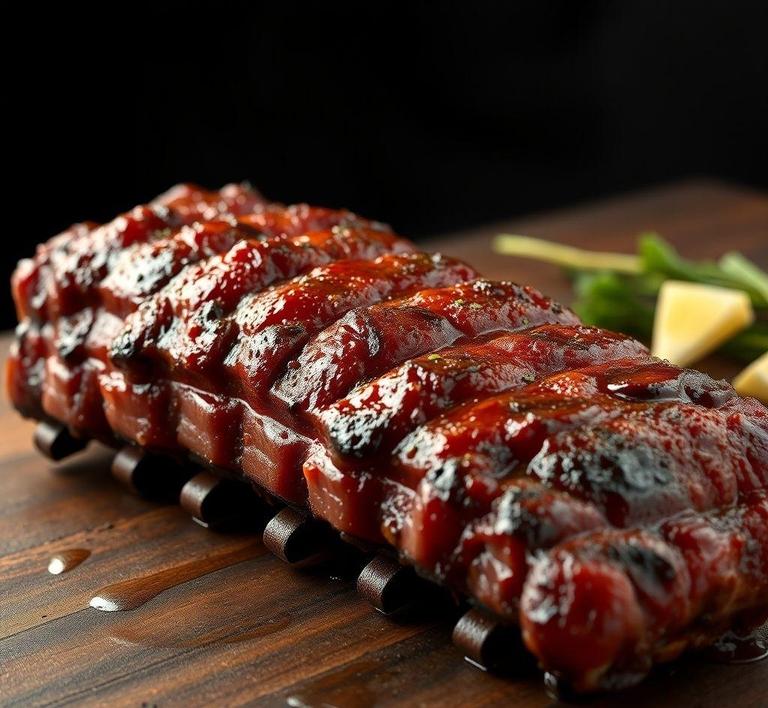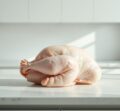Refreezing pork back ribs can be a bit tricky, but with the right knowledge, it’s definitely doable without compromising flavor or texture. Whether you’ve got leftovers from a delicious BBQ or just need to extend the shelf life of your ribs for later, knowing how to properly refreeze them is key. This guide will walk you through the best methods for storing, handling, and reheating your ribs so they taste just as good the second time around. From packaging techniques to how long you can safely store them in the freezer, you’ll be well-prepared to make the most out of your pork back ribs!
Can You Refreeze Pork Back Ribs?

Yes, you can refreeze pork back ribs-but with a few essential caveats. The safety and practicality of refreezing largely depend on how the ribs were previously thawed and how long they were out of the freezer.
If the pork back ribs were thawed in the refrigerator, they remain at a safe, consistent temperature (below 40°F/4°C), which means refreezing them is generally considered safe by USDA standards. However, if the ribs were thawed at room temperature (on a countertop, for example) or in warm water, refreezing them is risky and not recommended due to potential bacterial growth.
Cooked pork back ribs are a different story. If they were cooked thoroughly and cooled properly, refreezing them is safer than raw ribs, since the cooking process would have eliminated most surface bacteria. That said, flavor and texture could still suffer if proper steps aren’t taken.
How To Refreeze Pork Back Ribs?
To refreeze pork back ribs safely and in a way that preserves as much quality as possible, follow this methodical approach:
-
Assess the Condition:
- Ensure the ribs have been thawed in the refrigerator and haven’t been sitting out for more than two hours (or one hour if the ambient temperature is above 90°F/32°C).
- Check for any off smells, discoloration, or slimy textures. If any of these are present, discard the ribs-do not refreeze.
-
Portion Before Freezing:
- Divide the ribs into meal-sized portions. This way, you only thaw what you need next time, minimizing the need for repeated thaw/refreeze cycles.
-
Wrap Properly:
- Use a double-layer method for optimal protection. Start with plastic wrap or aluminum foil, then place the wrapped ribs into a heavy-duty freezer bag or an airtight container. Squeeze out as much air as possible to prevent freezer burn.
-
Label and Date:
- Clearly label each package with the date of refreezing and whether the ribs are raw or cooked. This helps you track freshness and avoid keeping them too long.
-
Freeze Promptly:
- Place the wrapped ribs in the coldest part of the freezer. Ideally, your freezer should be set at 0°F (-18°C) or lower for safe long-term storage.
Quality Impact
While refreezing pork back ribs is generally safe under the right conditions, it’s important to note that quality takes a hit each time meat is frozen and thawed. Here’s what you can expect:
-
Texture Changes:
Ice crystals that form during freezing can puncture the muscle fibers in the meat. Upon thawing, these fibers may release more moisture, making the ribs drier and potentially tougher after cooking-especially noticeable in raw ribs.
-
Flavor Degradation:
Every freeze-thaw cycle subtly erodes the rich, meaty flavor of pork ribs. This is due to oxidation of fats and breakdown of muscle proteins. Cooked ribs tend to hold onto their flavor a little better, especially if they’re stored in sauce or broth.
-
Appearance:
Refrozen ribs may look a bit darker or more blotchy after being thawed again, particularly if they weren’t wrapped well. This is mostly cosmetic but can be off-putting.
-
Nutritional Value:
While freezing doesn’t significantly reduce the nutritional value of meat, moisture loss and degradation of texture might make the ribs less satisfying from a culinary perspective.
Refreezing pork back ribs is a viable option when done thoughtfully and under the right conditions. The safety of the process hinges on how the ribs were thawed, while the overall quality depends on how they’re handled during the refreezing process. For best results:
- Only refreeze ribs thawed in the refrigerator.
- Wrap them properly to minimize freezer burn and moisture loss.
- Accept that some texture and flavor degradation may occur, especially after multiple freeze-thaw cycles.
In short, while refreezing isn’t ideal from a culinary standpoint, it can be a practical solution when circumstances demand it-so long as safety always comes first. If you’re planning a future feast, refrozen ribs can still yield satisfying results, especially when paired with a bold marinade or barbecue sauce to compensate for any lost moisture or flavor.
Is It Safe To Refreeze Pork Back Ribs?
Refreezing pork back ribs can be safe under the right conditions, but it’s a topic that must be approached with care and informed understanding. The key determinant here is temperature control. If pork back ribs have been thawed in the refrigerator and have not exceeded 40°F (4°C), they can be safely refrozen without significant risk of foodborne illness. The U.S. Department of Agriculture (USDA) supports this stance, emphasizing that meat kept cold during thawing-never left at room temperature-is safe to refreeze.
However, each freezing and thawing cycle can degrade the quality of the meat. When ribs are frozen, ice crystals form within the muscle fibers. Upon thawing, these crystals melt and release moisture, which can result in drier, tougher meat after cooking. Refreezing amplifies this texture loss. So, while it may be safe, it isn’t always ideal for flavor and mouthfeel.
There’s an exception to the rule: If ribs have been thawed using quicker methods such as in cold water or a microwave-methods that allow the meat to enter the temperature danger zone (between 40°F and 140°F)-they should not be refrozen. In these cases, the meat must be cooked immediately and then either consumed or frozen again in its fully cooked form.
Signs That Pork Back Ribs Should Not Be Refrozen
Before deciding to refreeze pork back ribs, it’s crucial to evaluate their current condition. There are several clear warning signs that the meat may be unsafe to eat, let alone refreeze:
-
Unpleasant Odor:
Fresh pork should have a mild, almost undetectable scent. If your ribs emit a sour, sulfuric, or otherwise foul odor, it’s a glaring indicator of spoilage. This smell is often caused by bacterial activity, and such meat should be discarded immediately.
-
Slimy or Sticky Texture:
A slick, tacky, or overly moist surface can indicate the growth of spoilage bacteria. This is especially concerning if the texture has changed from its original state before thawing.
-
Discoloration:
Healthy pork has a pinkish-red hue. If you observe a greyish-brown or greenish tint, that’s a red flag. Oxidation and bacterial growth cause these color changes, often accompanied by the other symptoms mentioned above.
-
Excessive Time at Room Temperature:
If the ribs have been left out for more than 2 hours (or 1 hour in temperatures above 90°F/32°C), bacteria can multiply rapidly. Even if they look and smell fine, they may harbor dangerous pathogens and should not be refrozen.
-
Freezer Burn (to a lesser extent):
While not a health concern, extensive freezer burn-caused by air exposure-degrades the texture and taste. If ribs are heavily frostbitten, they may not be worth refreezing for quality reasons, although they may still be safe if previously stored properly.
Common Refreezing Mistakes
Despite best intentions, many home cooks fall into common traps when dealing with frozen meat. Here are the most frequent and risky errors when it comes to refreezing pork back ribs:
-
Thawing at Room Temperature:
This is perhaps the most dangerous mistake. Leaving meat to thaw on the counter allows it to quickly enter the temperature danger zone, encouraging rapid bacterial growth. Even if the inside feels cool, the outer layers may have become a breeding ground for pathogens.
-
Refreezing After Partial Thawing:
Sometimes meat is thawed only partially before plans change, and it’s tempting to just toss it back in the freezer. However, if even a portion of the meat reached over 40°F, there’s risk involved.
-
Repeated Freeze-Thaw Cycles:
Each time meat is thawed and refrozen, it undergoes further moisture and texture degradation. After two cycles, ribs often become noticeably dry, chewy, and far less flavorful-even if they’re still safe to eat.
-
Failing to Label and Date:
Refreezing meat without labeling it leads to uncertainty about how long it’s been in the freezer and how many cycles it’s undergone. This often results in either unnecessary waste or, worse, accidental consumption of spoiled food.
-
Refreezing Cooked with Raw:
Mixing cooked leftovers with raw refrozen meat can increase contamination risks. Always store them separately and clearly identify their preparation status.
Tips And Tricks
To preserve the safety and quality of your pork back ribs, follow these expert-approved practices:
-
Always Thaw in the Refrigerator:
This is the safest method for defrosting. It keeps the meat consistently below 40°F and allows you the flexibility to refreeze if needed.
-
Divide Into Portions Before Freezing:
If you’re buying or preparing ribs in bulk, separate them into meal-sized portions before freezing. This allows you to thaw only what you need, reducing waste and avoiding unnecessary refreezing.
-
Use Vacuum-Sealing or Tight Wrapping:
Freezer burn is caused by air exposure. Prevent this by using vacuum-seal bags or tightly wrapping the meat in plastic wrap followed by aluminum foil. Label each package with the date and original freeze date.
-
Cook Before Refreezing When in Doubt:
If you’re uncertain about the safety of refreezing raw ribs, consider cooking them first. Fully cooked meat can be safely frozen again, and it provides peace of mind without compromising safety.
-
Keep a Freezer Thermometer:
Your freezer should remain at or below 0°F (-18°C). This ensures any meat stored-frozen or refrozen-remains safe for longer periods.
Conclusion
While refreezing pork back ribs is not inherently unsafe, it must be done with vigilance and knowledge. The core principle is temperature control: if the ribs have remained below 40°F throughout their thawing process, they can be safely refrozen. However, safety should never trump quality indefinitely. Repeated cycles of freezing and thawing compromise the taste, texture, and overall appeal of the meat.
By understanding the signs of spoilage, avoiding common pitfalls, and using strategic storage techniques, you can confidently navigate the process of refreezing pork back ribs. Whether you’re a casual cook or a seasoned grillmaster, treating your meat with respect from freezer to fork will ensure every bite is both safe and satisfying.


